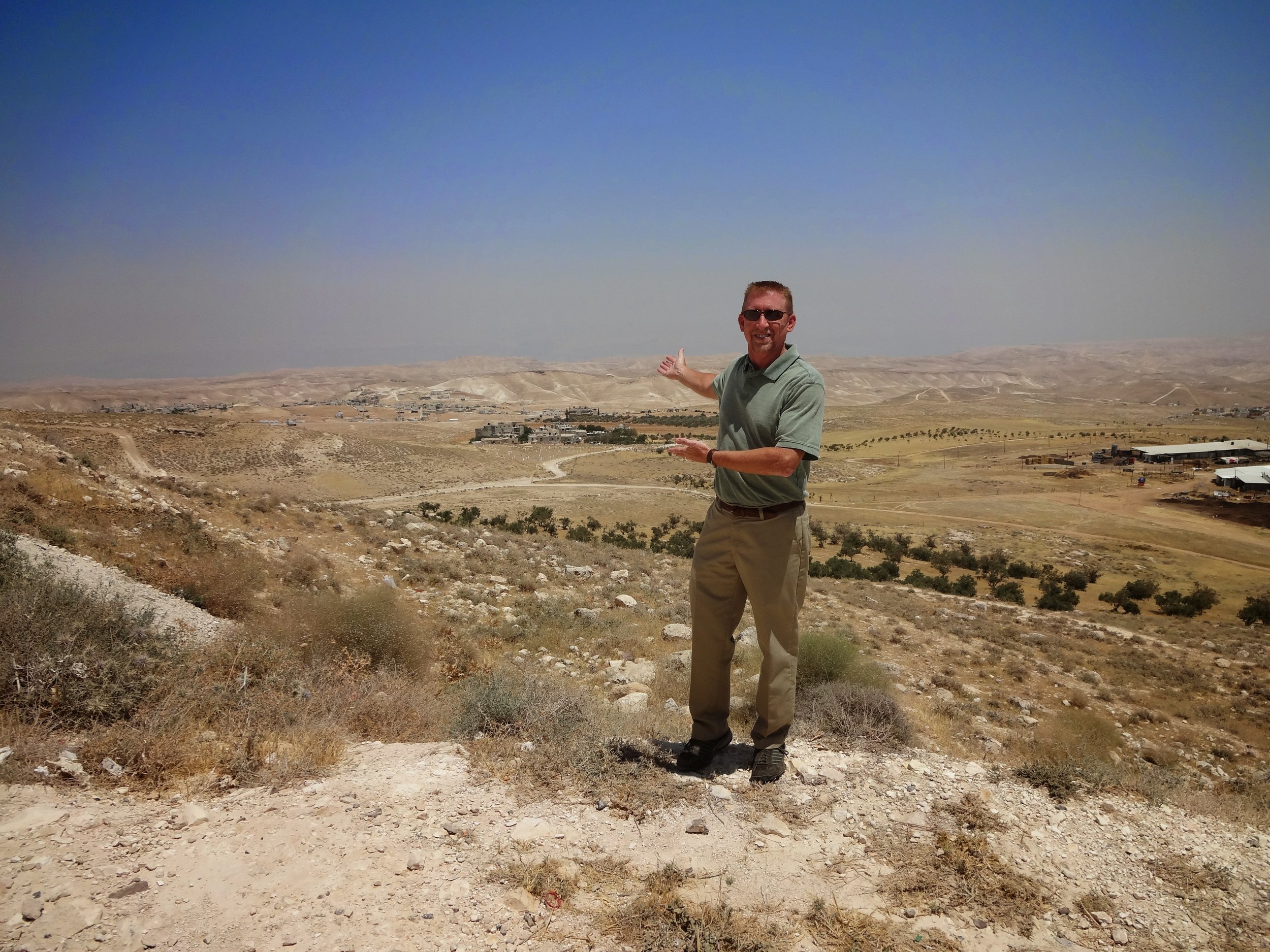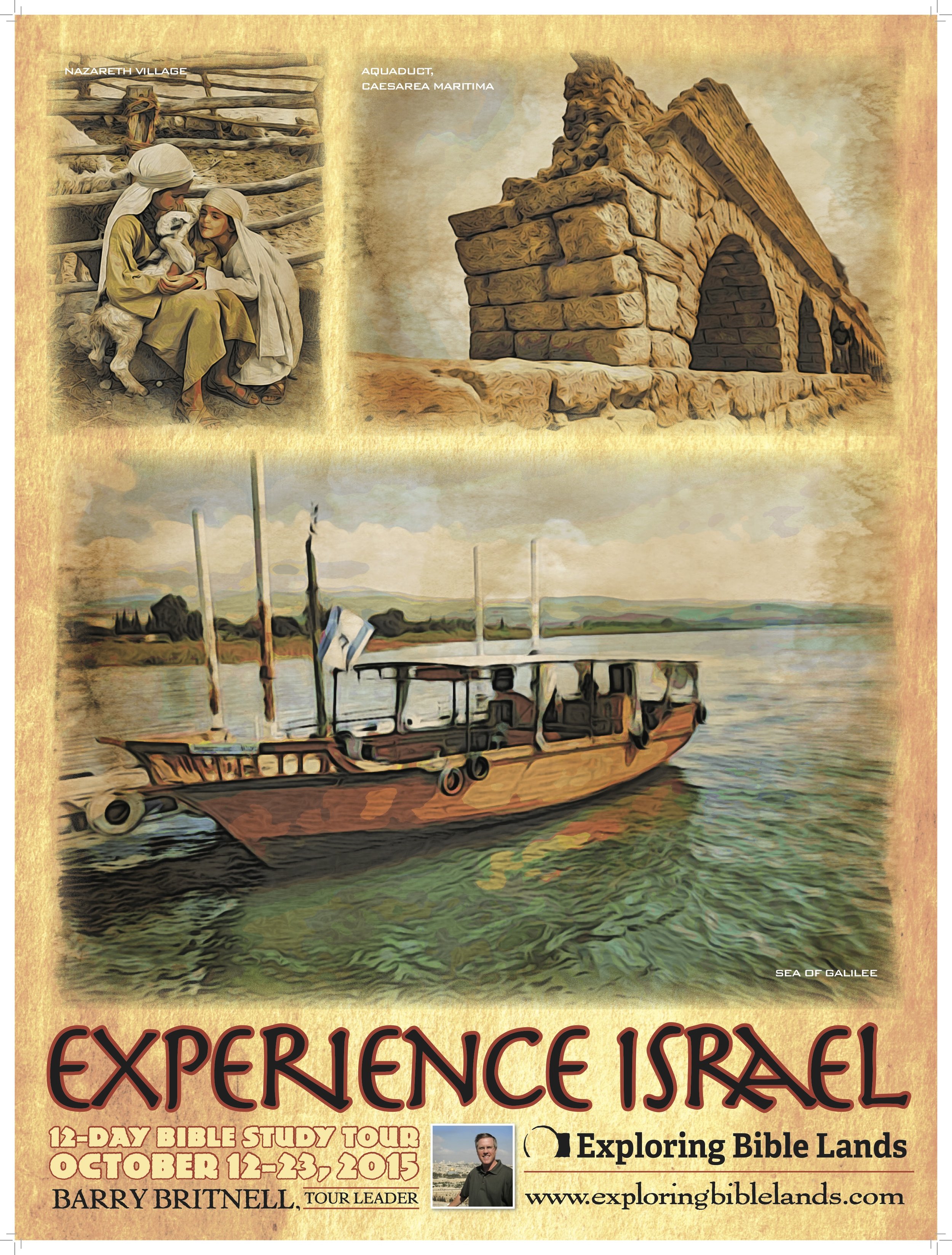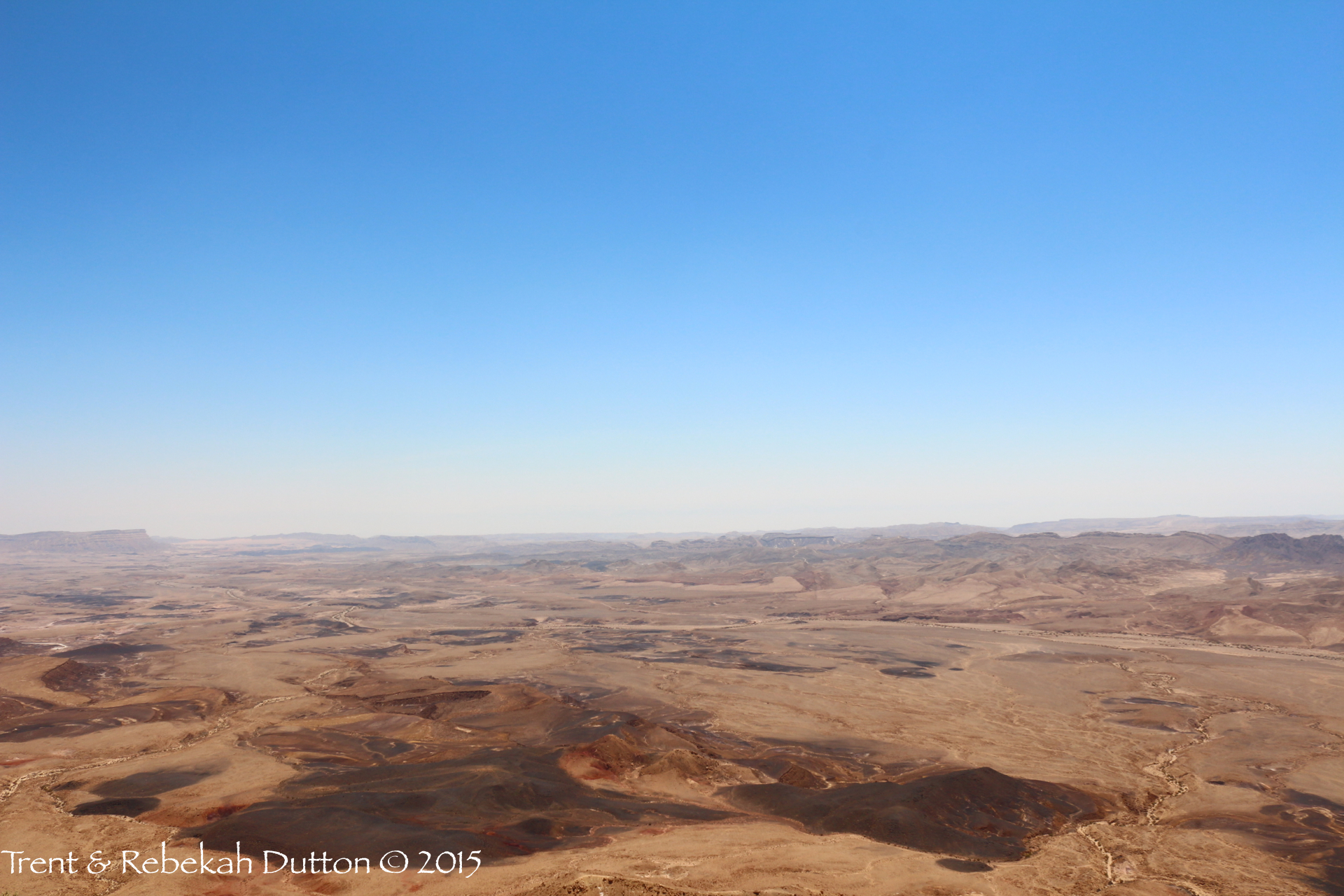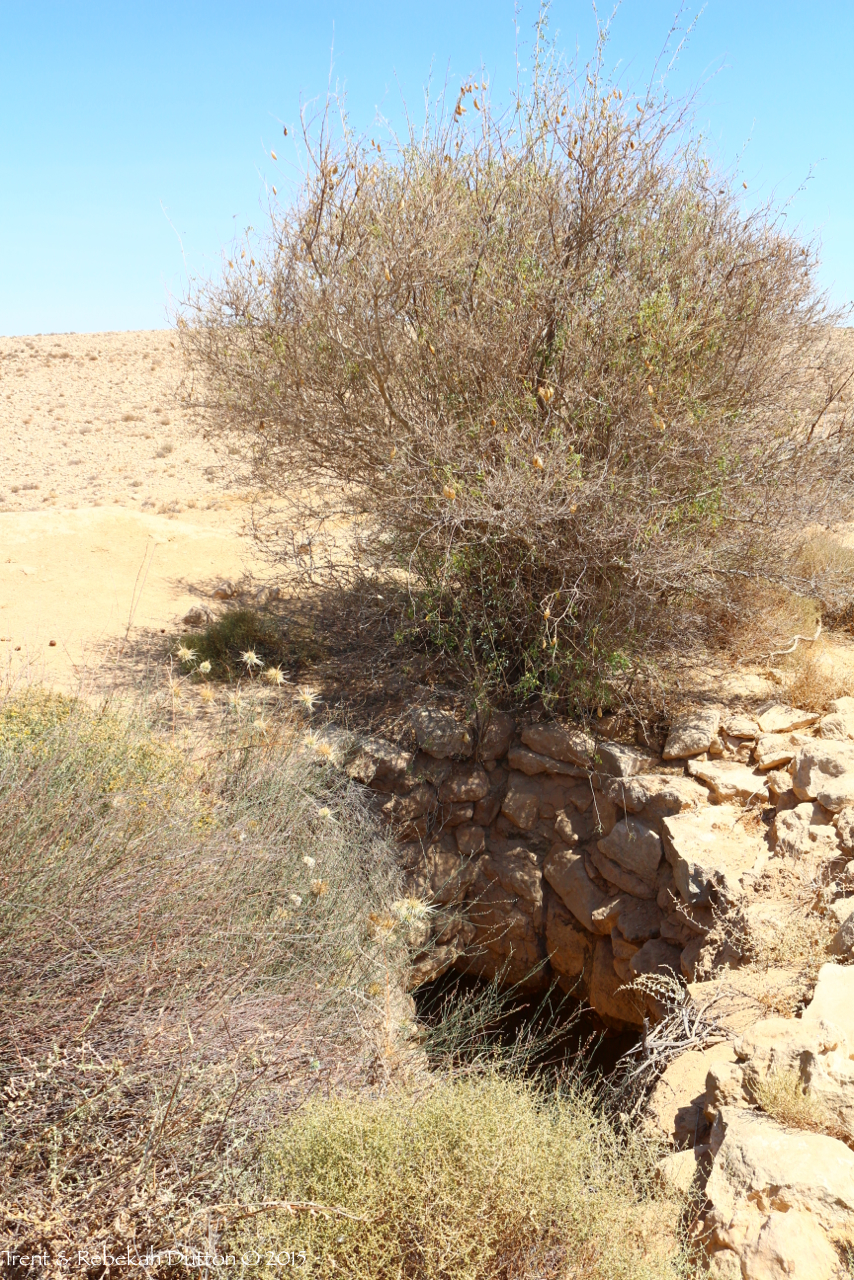 NOTE: I am continuing my series of retrospective posts on the our tour one year ago. I invite you to start at the beginning and read through all of them.
NOTE: I am continuing my series of retrospective posts on the our tour one year ago. I invite you to start at the beginning and read through all of them.
A year ago today, we went to the small town of Bethlehem. (Actually, it is no longer that small.)
Located just six miles south of Jerusalem, is the town of Bethlehem. This was the town that David was from. And, it was the town that Jesus was born in. We visited the Church of the Nativity, which sits above the traditional location where Jesus was born. From there, we traveled to the Shepherds' fields and then to the Herodium.
Our final stop of the day was at Shibly Kando's Antiquities shop. Mr. Kando is the grandson of one of the main people involved in the discovery and recognition of the Dead Sea Scrolls. In his store, you can see one of the four original jars on display. (Two of the other three are located at the Israel Museum and the other one is located at the Vatican in Rome.)
Tomorrow: The Israel Museum and Ashkelon.
Have you been enjoying these posts on last year's tour? Are you interested in traveling with me this year? Then, I would love to have you join me. Our 12-day tour is scheduled for October 12-23. We will stay one night on the Mediterranean Sea, three nights on the shores of the Sea of Galilee and five nights in beautiful Jerusalem. During the day, we will visit dozens of sites that will enhance your understanding of the land and of the Biblical stories that take place in them. Reservations are coming in, but we still have some availability! This is a first-class tour with many extras thrown in that many Israel tours overlook. If you are interested, I encourage you to read the itinerary and contact me personally for more details.






